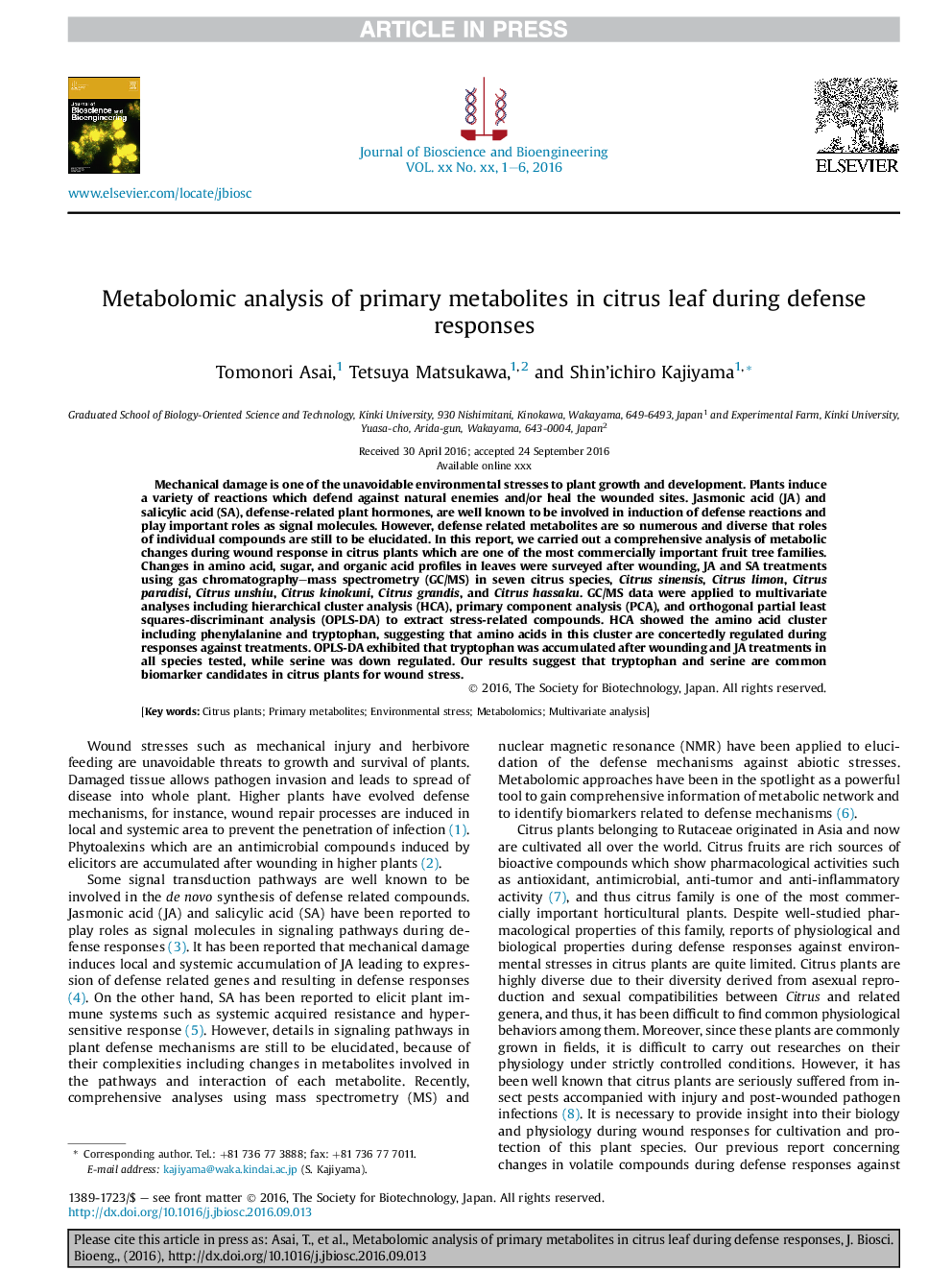| Article ID | Journal | Published Year | Pages | File Type |
|---|---|---|---|---|
| 4753415 | Journal of Bioscience and Bioengineering | 2017 | 6 Pages |
Abstract
Mechanical damage is one of the unavoidable environmental stresses to plant growth and development. Plants induce a variety of reactions which defend against natural enemies and/or heal the wounded sites. Jasmonic acid (JA) and salicylic acid (SA), defense-related plant hormones, are well known to be involved in induction of defense reactions and play important roles as signal molecules. However, defense related metabolites are so numerous and diverse that roles of individual compounds are still to be elucidated. In this report, we carried out a comprehensive analysis of metabolic changes during wound response in citrus plants which are one of the most commercially important fruit tree families. Changes in amino acid, sugar, and organic acid profiles in leaves were surveyed after wounding, JA and SA treatments using gas chromatography-mass spectrometry (GC/MS) in seven citrus species, Citrus sinensis, Citrus limon, Citrus paradisi, Citrus unshiu, Citrus kinokuni, Citrus grandis, and Citrus hassaku. GC/MS data were applied to multivariate analyses including hierarchical cluster analysis (HCA), primary component analysis (PCA), and orthogonal partial least squares-discriminant analysis (OPLS-DA) to extract stress-related compounds. HCA showed the amino acid cluster including phenylalanine and tryptophan, suggesting that amino acids in this cluster are concertedly regulated during responses against treatments. OPLS-DA exhibited that tryptophan was accumulated after wounding and JA treatments in all species tested, while serine was down regulated. Our results suggest that tryptophan and serine are common biomarker candidates in citrus plants for wound stress.
Related Topics
Physical Sciences and Engineering
Chemical Engineering
Bioengineering
Authors
Tomonori Asai, Tetsuya Matsukawa, Shin'ichiro Kajiyama,
